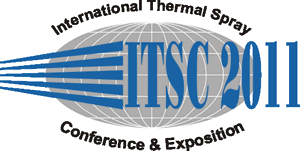
|
2620 |
|
Study of oxidation behavior of TBCs with APS and HVOF CoNiCrAlY bond coatings |
|
Abdullah Cahit Karaoglanli* / Bartin University, Engineering Faculty, Metallurgical and Materials Engineering Department, Turkey Thomas Lampke/ Chemnitz University of Technology, Institute of Materials Science and Engineering, Germany Thomas Grund/ Chemnitz University of Technology, Institute of Materials Science and Engineering, Germany Funda Ak Azem/ Dokuz Eylul University, Department of Metallurgical and Materials Engineering, Turkey Ismail Ozdemir/ Bartin University, Department of Metallurgical and Materials Engineering, Turkey Ahmet Turk/ Sakarya University, Department of Metallurgical and Materials Engineering, Turkey Fatih Üstel/ Sakarya University, Department of Metallurgical and Materials Engineering, Turkey |
|
The use of Thermal Barrier Coatings (TBCs) has resulted in a significant improvement of the efficiency of gas turbines and diesel engines. A typical TBC is a multilayered coating system that comprises an oxidation resistant metallic bond coating (BC) and a thermally insulating ceramic top coating (TC). Under service condition an Al2O3 inter-layer, the Thermally Grown Oxide (TGO), forms in the interface between bond and top coating using aluminium from the BC material and oxygen that attains from the environment through pore channels of the TC. The aim of the present study is to describe the TGO formation on metallic bond coats deposited by different thermal spraying techniques. Therefore, TBCs that consist of a typical bond layer / top layer system (CoNiCrAlY bond layers and YSZ top layers) are deposited on Inconel 718 superalloy substrates. The metallic bond coatings are applied via Atmospheric Plasma Spraying (APS) and High Velocity Oxygen Fuel (HVOF)); the ceramic top coatings via APS. Investigations are done concerning the oxidation behavior of this TBC system at 1100 °C in normal atmosphere. The microscopic investigations by optical and scanning electron microscopy are complemented by energy dispersive X-ray spectrometry as well as X-ray diffractometry. The TGO formation and growth during the oxidation test are discussed and compared. |